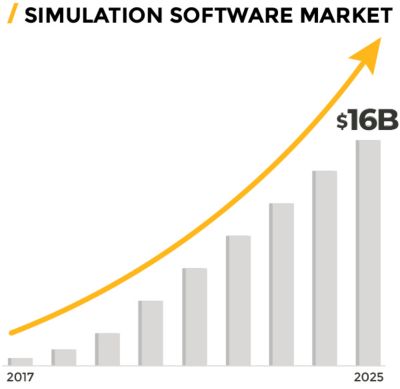ANSYS BLOG
February 17, 2021
STEM the Tide of Product Design and Development Complexity
We hear a lot about increasing levels of complexity in product design and development. It’s easy to bemoan product complexity as a rising tide of new technologies like 5G, electrification or autonomous engineering driven by shifting consumer preferences and complicated by regulations that vary from country to country. It sometimes feels like the very technologies we strive to bring to market threaten to overwhelm us as we try to design and engineer more innovative products in less time. A more optimistic and practical approach would be to use digital transformation innovations to provide the solution to engineering more complex products. That solution is knowledge.
Simulation, analysis and information management software provide the knowledge needed to combat complexity. Product designers and engineers can visualize phenomena like electromagnetic (EM) waves emanating from antennas or thermal levels across a printed circuit board (PCB) to unlock design innovations previously hidden to them. Automated design analysis software can turn simulation data into actionable information to drive design-cost decisions. Information management software helps put cost, sustainability and regulatory data at the beginning of the process to inform design and manufacturing. The list of digital engineering tools that designers and engineers can use to capitalize on complexity goes on and on.
Harness the Engineering Power of Knowledge
In a research paper1 analyzing product complexity that was presented at an ASME Design Engineering Technical Conference, the authors write:
“The ability to handle complex systems and products depends on the level of experience, knowledge and ability to learn. For the development of new innovative products, designers must acquire the knowledge and skills necessary for the particular development. As a result, the duration of the design process is affected by the design team’s learning curve in relation to complex product designs. The greater the complexity of a product, the greater the magnitude of domain knowledge needed to understand and develop it, and thereby potentially increasing its development time.”
The faster we can learn, the less effect complexity has on development time. Leading educators understand the correlation among complexity, digital transformation and education. For example, Dr. Christina DiMarino uses Ansys software to educate the next generation of engineers at Virginia Polytechnic Institute and State University, and Dr. Rajesh Bhaskaran is focused on bringing simulation education to as many people as possible via virtual learning that includes the use of simulation software, some of which is available via Ansys Innovation Courses.
“Simulation is a great learning platform,” says Bhaskaran. “It’s a great way to learn physics and the underlying theory.”
The Start of an Electronics Engineering Education
Ansys Innovation Courses are free, online, on-demand courses designed for students, educators and professional engineers who want to brush up on engineering fundamentals or learn more about the physics concepts outside their disciplines. Courses cover a variety of topics, including fluids, structures, STEM (science, technology, engineering and math) and electronics.
Complexity has especially skyrocketed in the field of electronics and will continue to do so as 5G, electrification and autonomy advance. The Ansys Innovation Courses feature seven electronics courses that are presented as a Fundamental Electromagnetics Concepts Learning Track that was developed by Dr. Kathryn Leigh Smith at the University of North Carolina — Charlotte in partnership with Ansys. It serves as an e-learning resource for the fundamental concepts of electromagnetics, beginning with the basics of vector algebra through to more advanced concepts, such as electromagnetics and magnetostatics.
Each course is divided into easily digestible lessons that help students develop an intuitive understanding of fundamental concepts with illustrative graphics, animations and field simulations that support spoken and written lesson materials.
Source: Transparency Market Research
Complexity isn’t going away, it’s accelerating. The simulation software market is also growing. According to industry research2, it is expected to reach $16 billion (USD) in 2025 and is projected to expand at a compound annual growth rate (CAGR) of 9.33% from 2017 to 2025. Knowledge – from the general fundamentals of physics available via Ansys Innovation Courses to the specific data gleaned from Ansys simulation software – will help us turn the challenge of complexity into a product development opportunity.
Learn more about the Ansys Innovation Courses.
Sources:
- Crespo-Varela, Josue & Kremer, Gül & Tucker, Conrad & Medina, Lourdes. (2012). An Analysis of Complexity Measures in Product Design and Development. Proceedings of the ASME Design Engineering Technical Conference. 3. 10.1115/DETC2012-71309.
- Transparency Market Research, 2017

